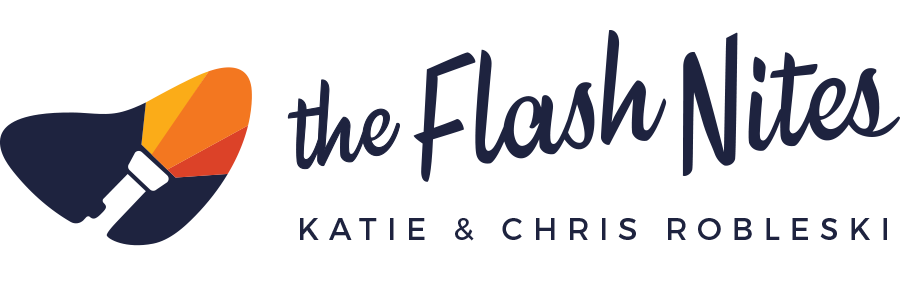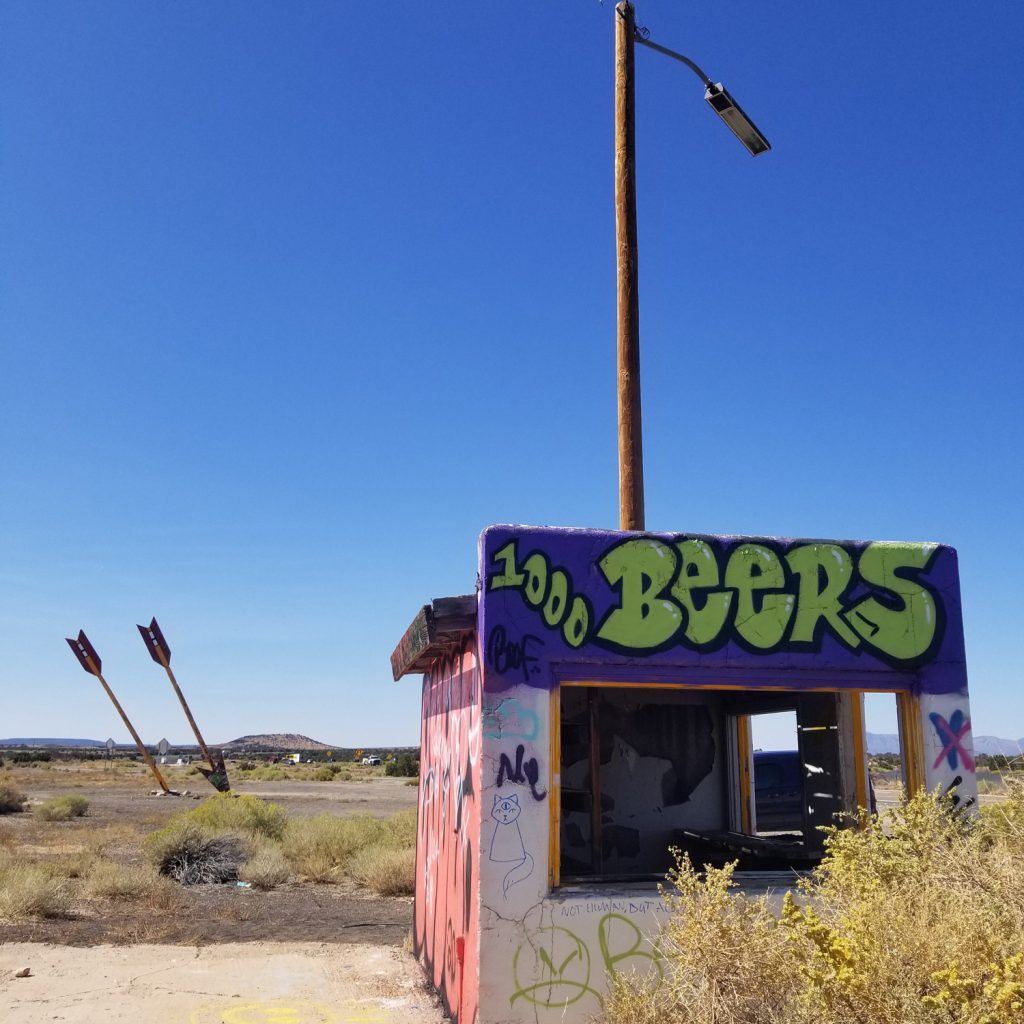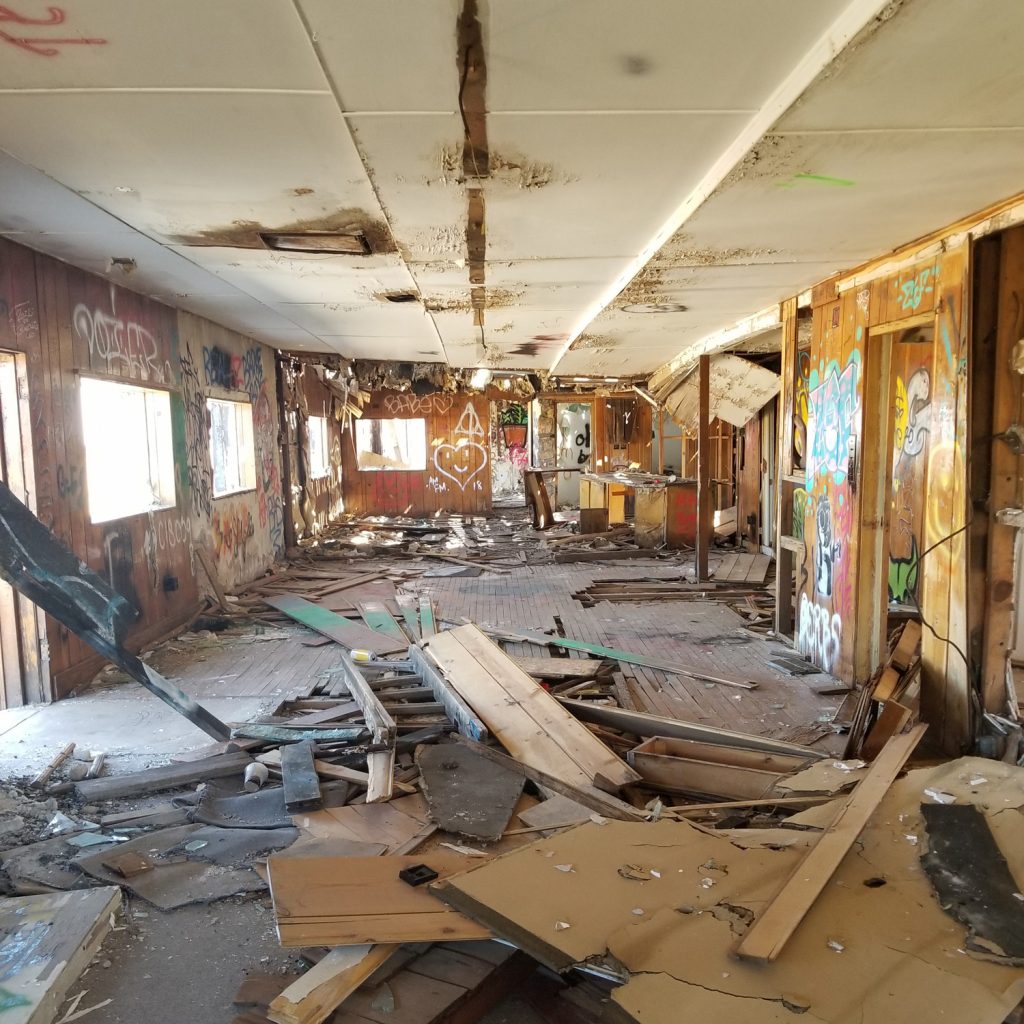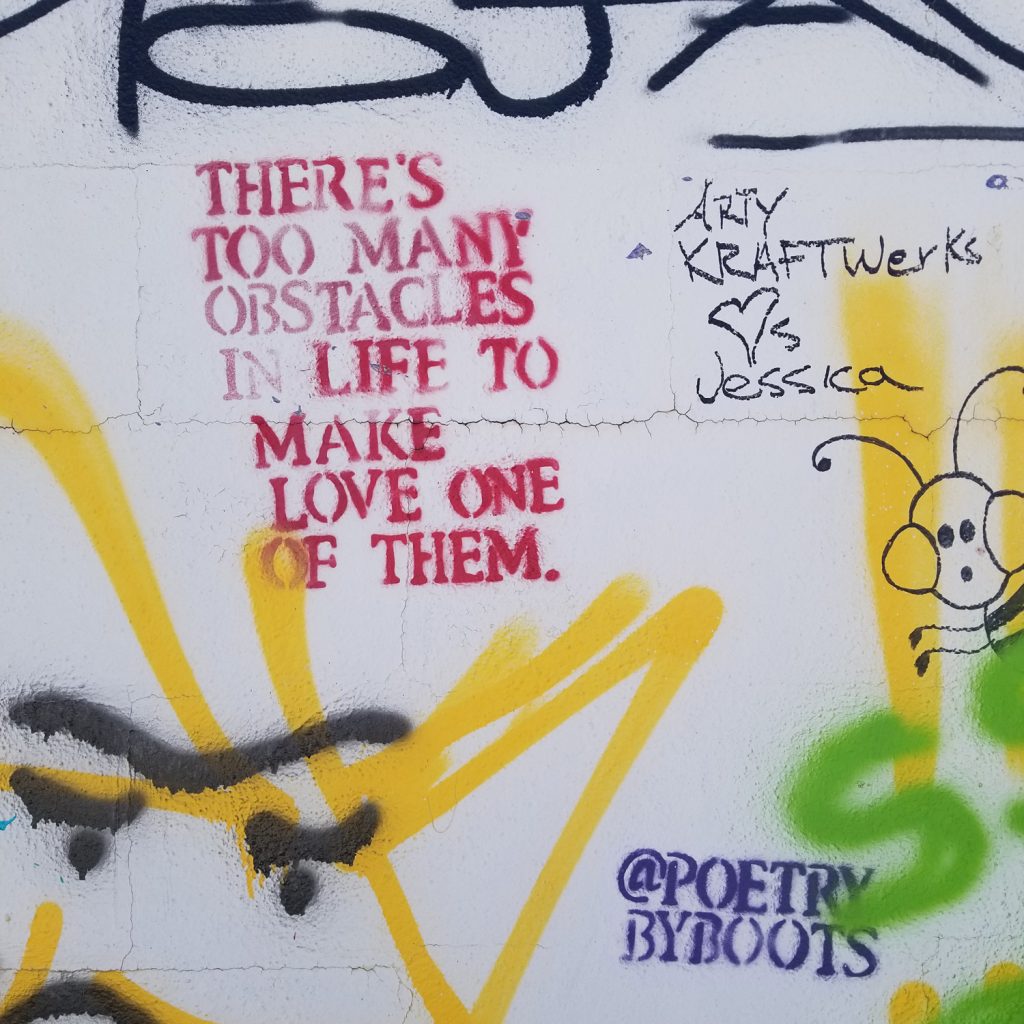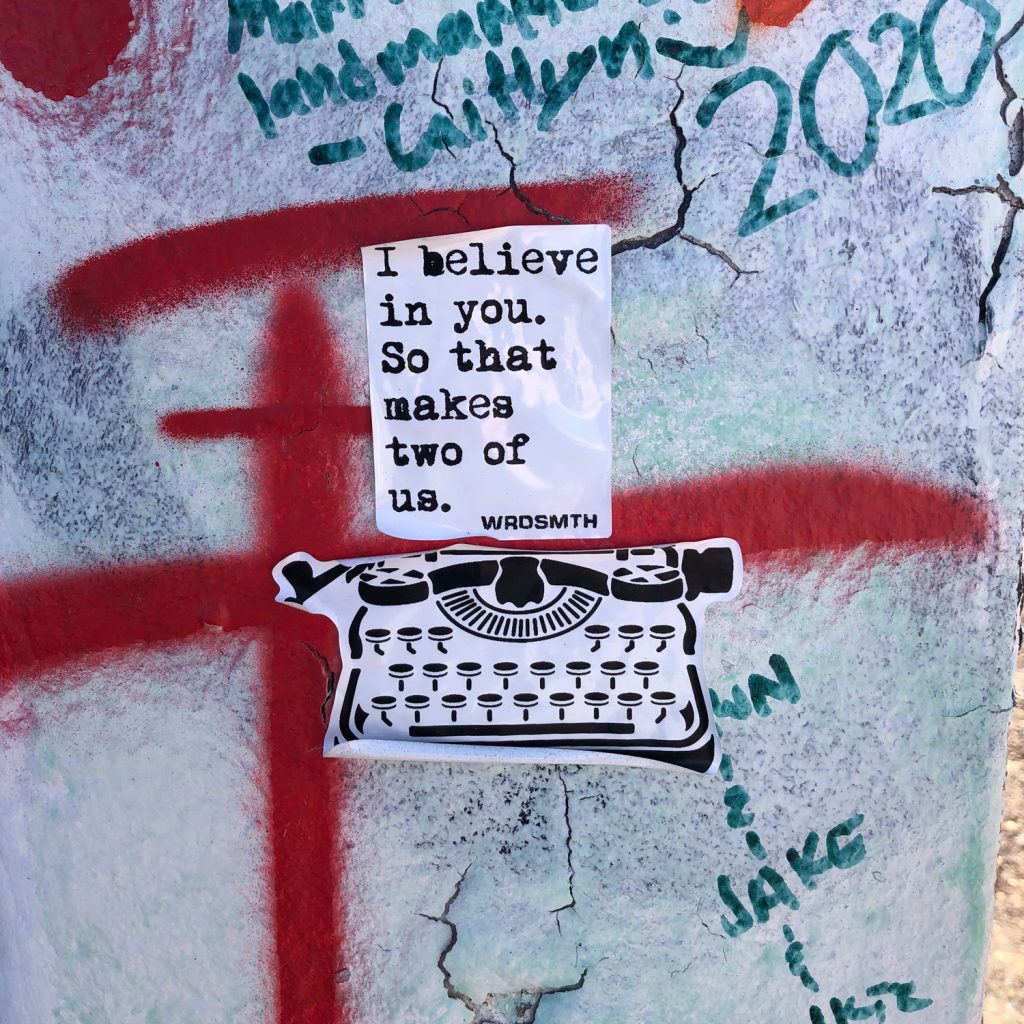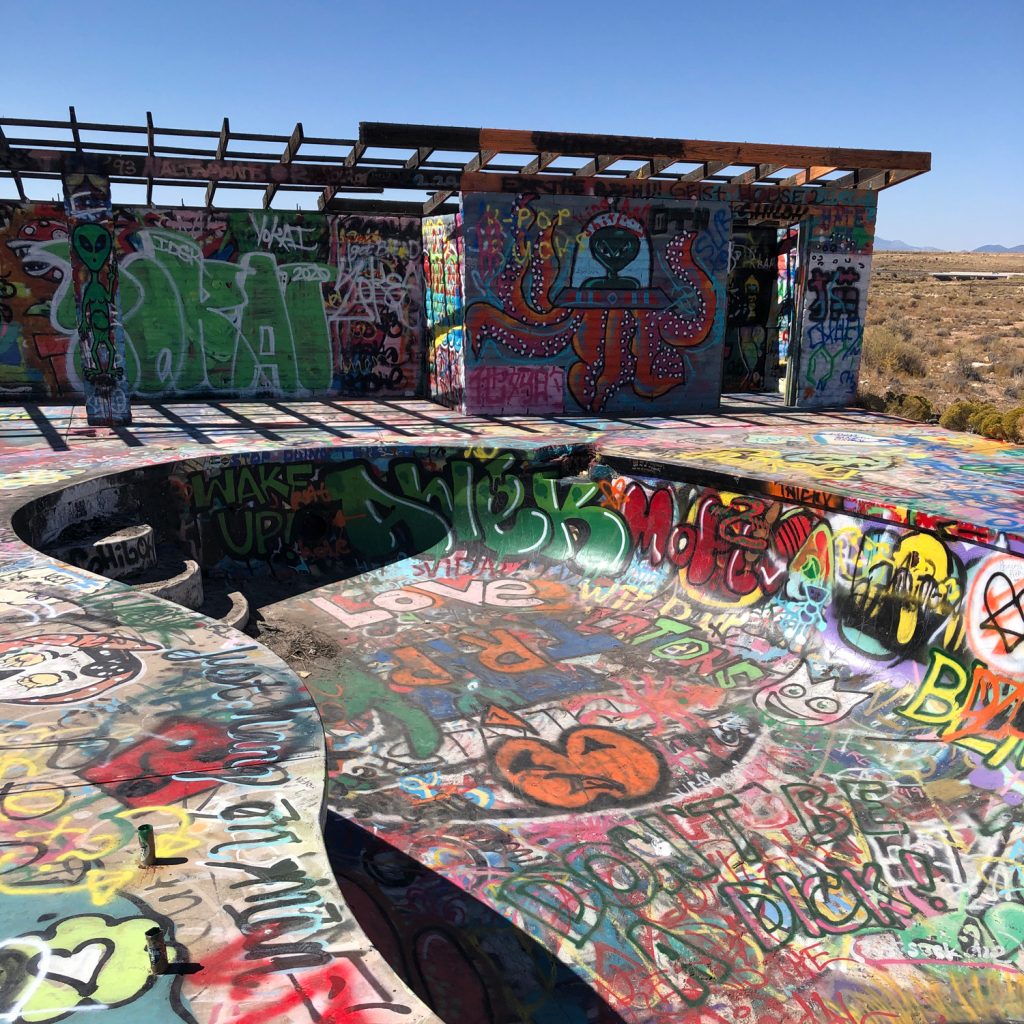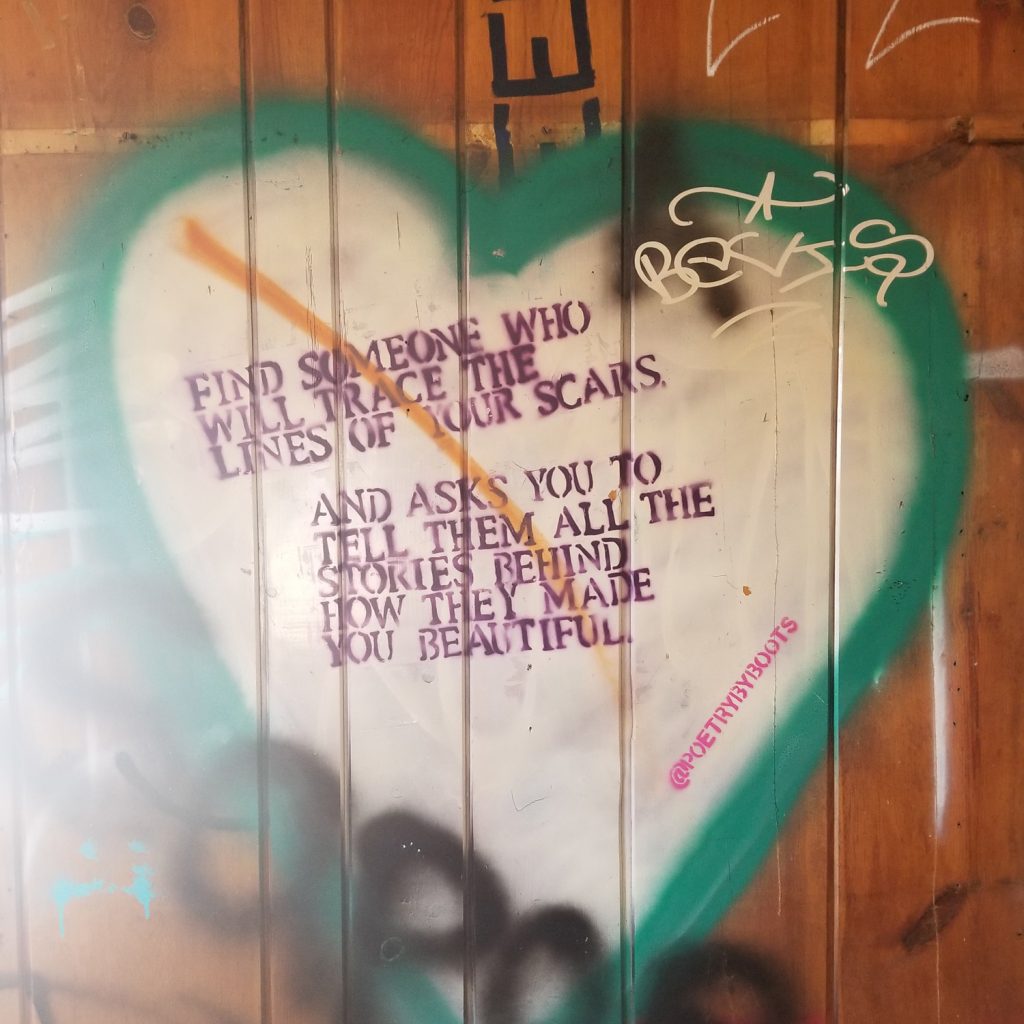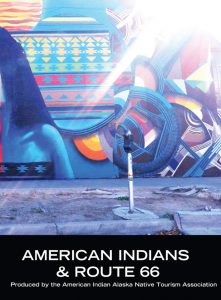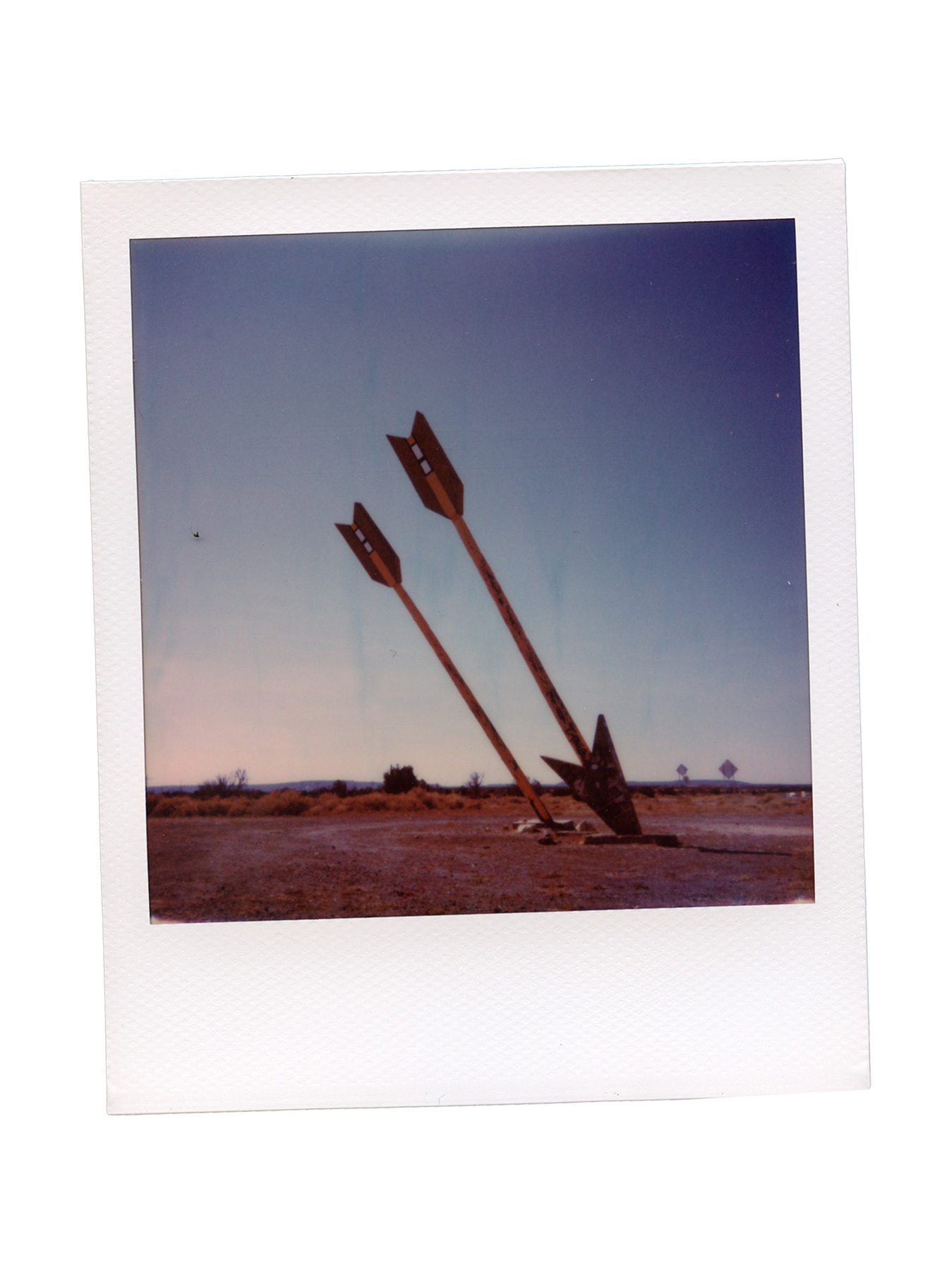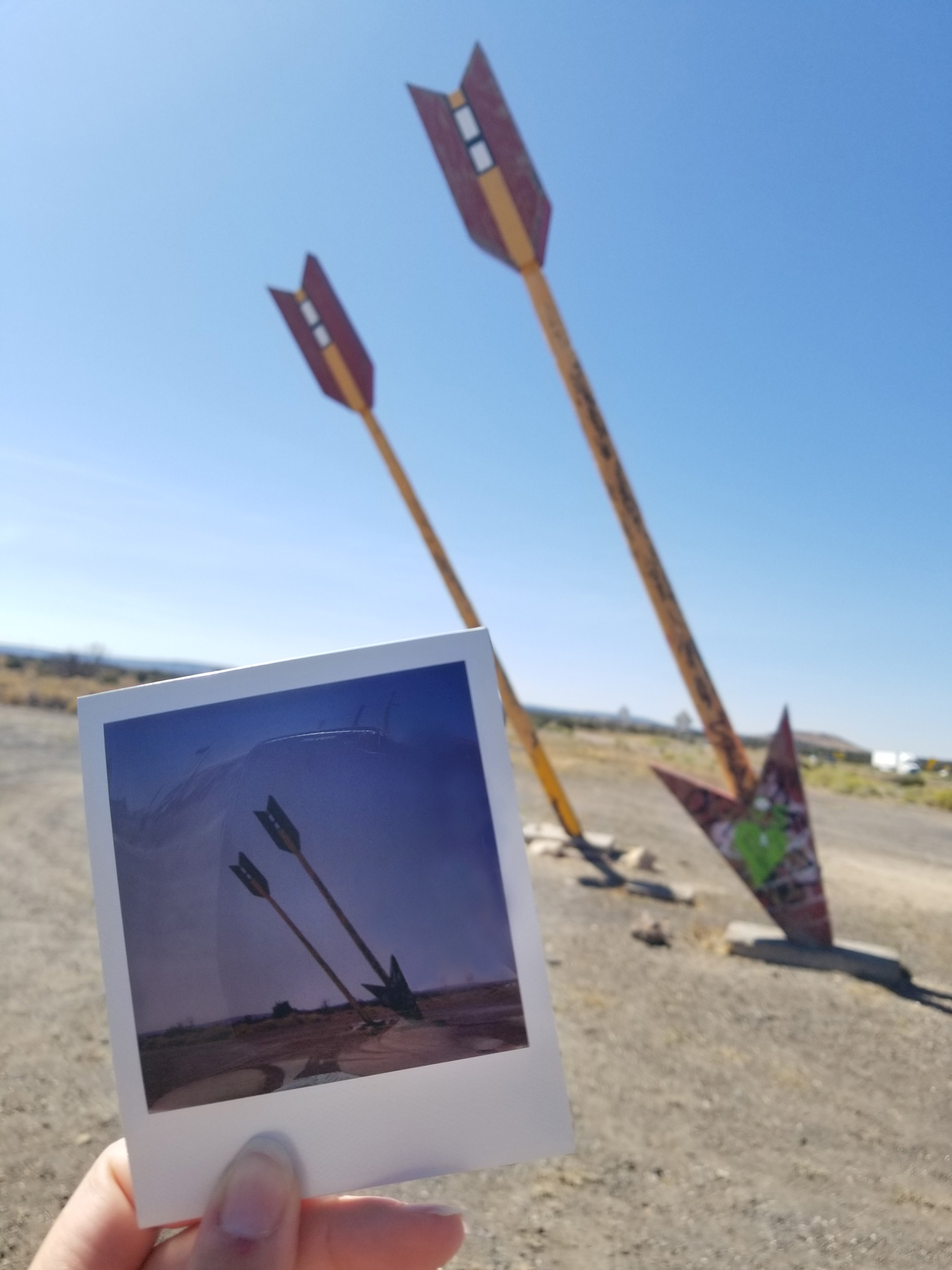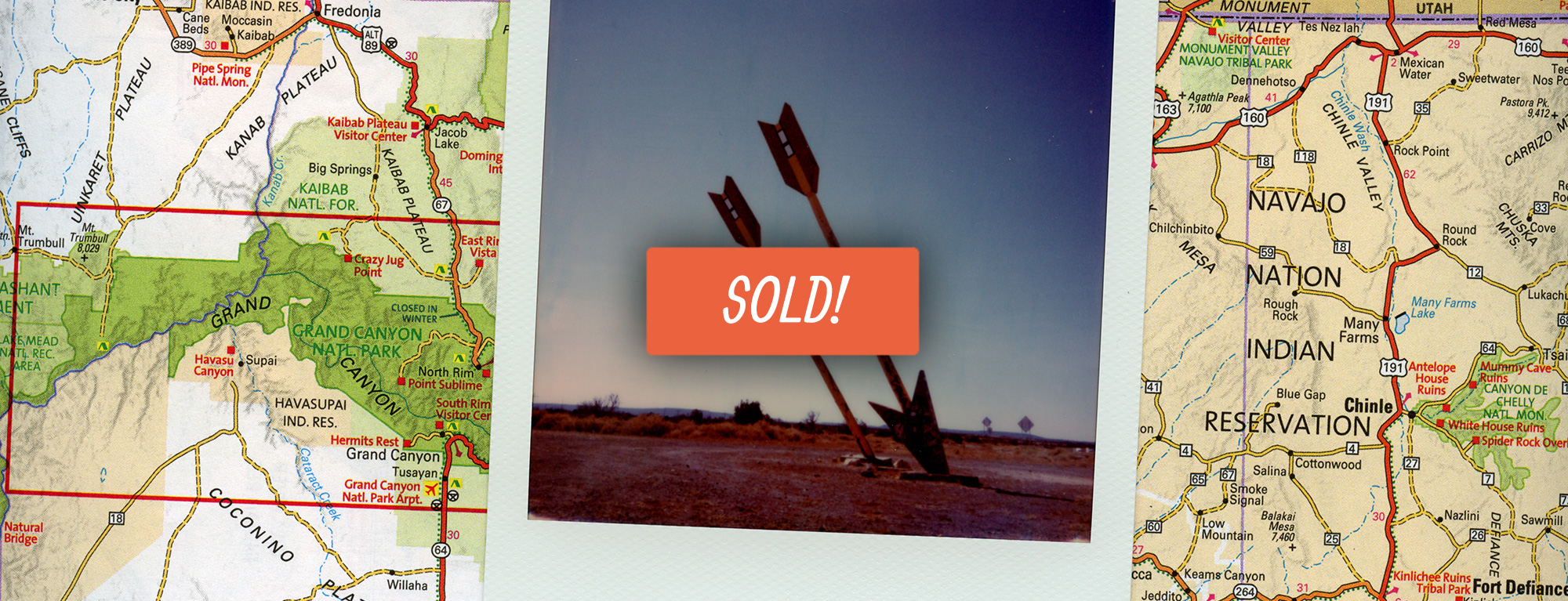“Some beautiful paths can’t be discovered without getting lost.”
― EROL OZAN
. . .
The biggest blow to Route 66 — 2,448 miles of highways and byways from Chicago to LA — was in the mid-20th century when newly constructed interstates drew patrons away from the once bustling towns to get them to their destinations more quickly.
Now imagine how you’d feel when a new trail or two-lane highway split right into your sacred land.
Much of what remains of Route 66 today meanders through Indigenous tribes, nations, and pueblos. And some of that route – especially in the Southwest stretch – is sprinkled with kitsch shops, motels, murals, statues and sculptures that draw from stereotypes of the surrounding Indigenous People and their way of life. From homes and ceremonial attire to trading posts and weapons, these appropriated symbols were used to lure curious white Americans to their establishments. Sadly, with the decommissioning and deterioration of Route 66, many of these locations sit abandoned, destroyed, and covered in graffiti.
When we came upon the Twin Arrows Trading Post just west of Holbrook, Arizona, we were shocked and saddened to see its current condition, compared to just a decade ago, not even considering what it once looked like in its heyday.
Twin Arrows Trading Post – 2010
(Note that politics were still a thing)
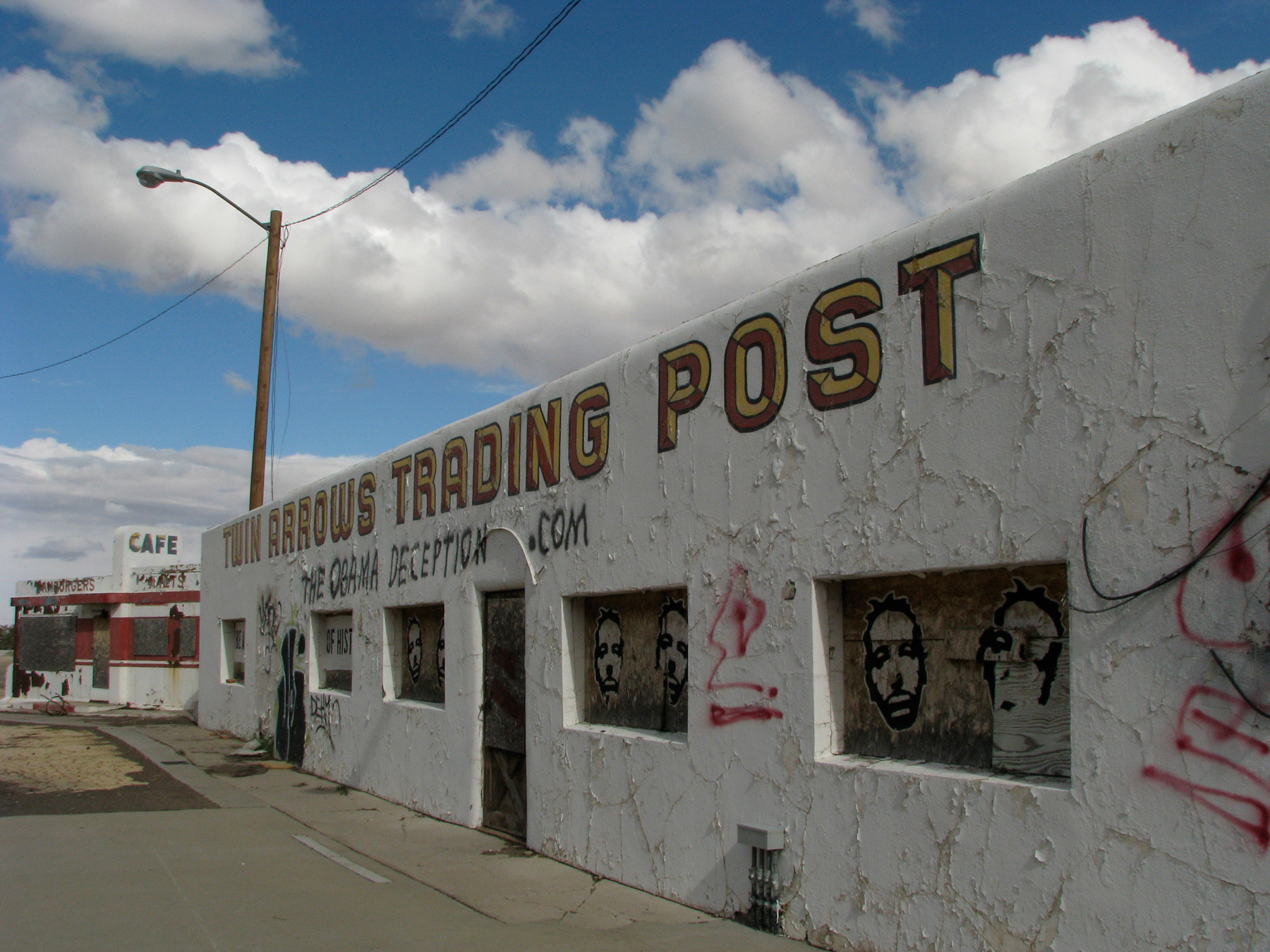
Twin Arrows Trading Post – 2020
You can barely tell the Cafe is a historic Valentine diner.
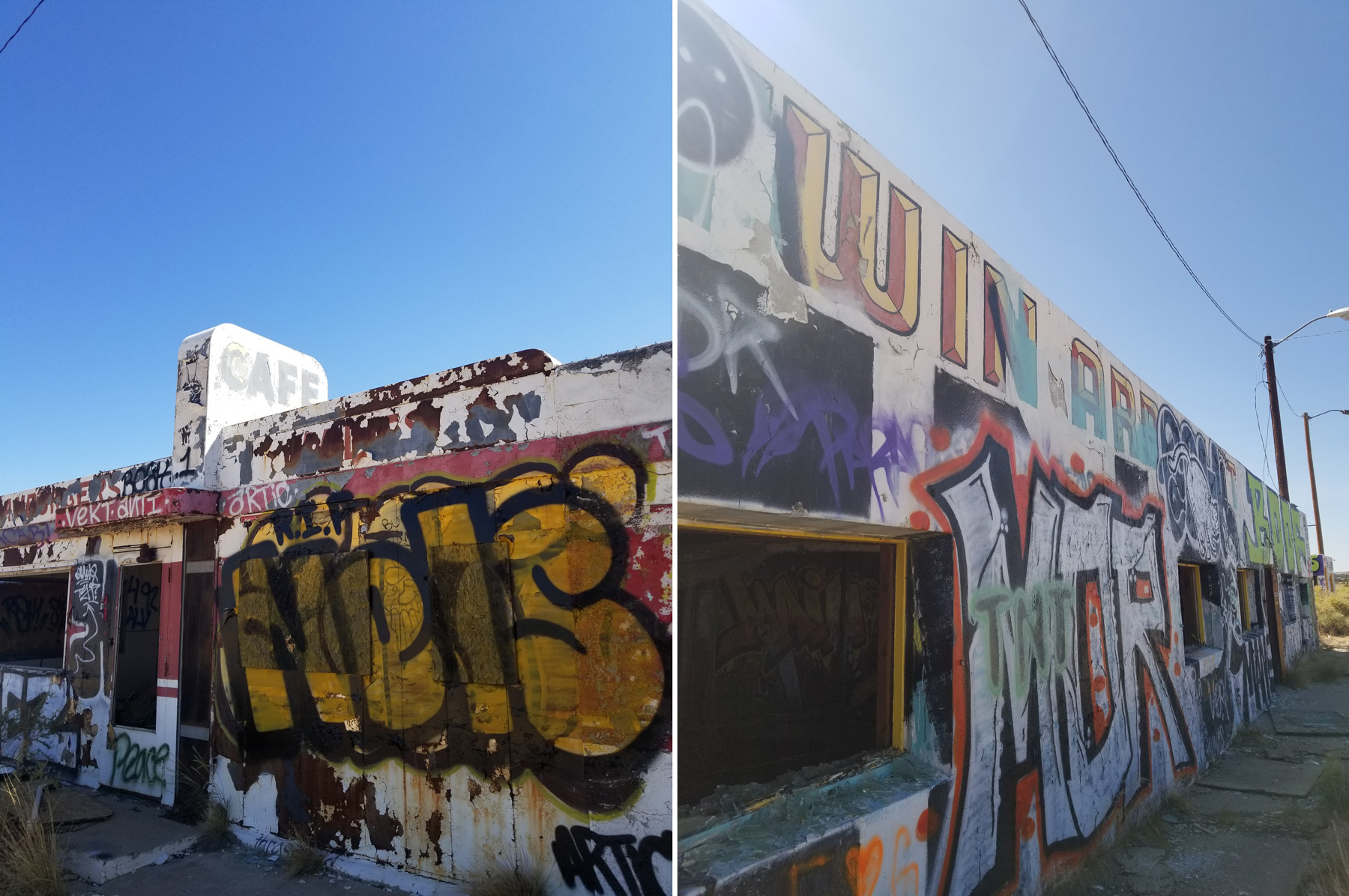
Twin Arrows sculpture – 2010 v. 2020
Notice how one of the arrows is missing and the sculpture had been freshly painted a decade ago.
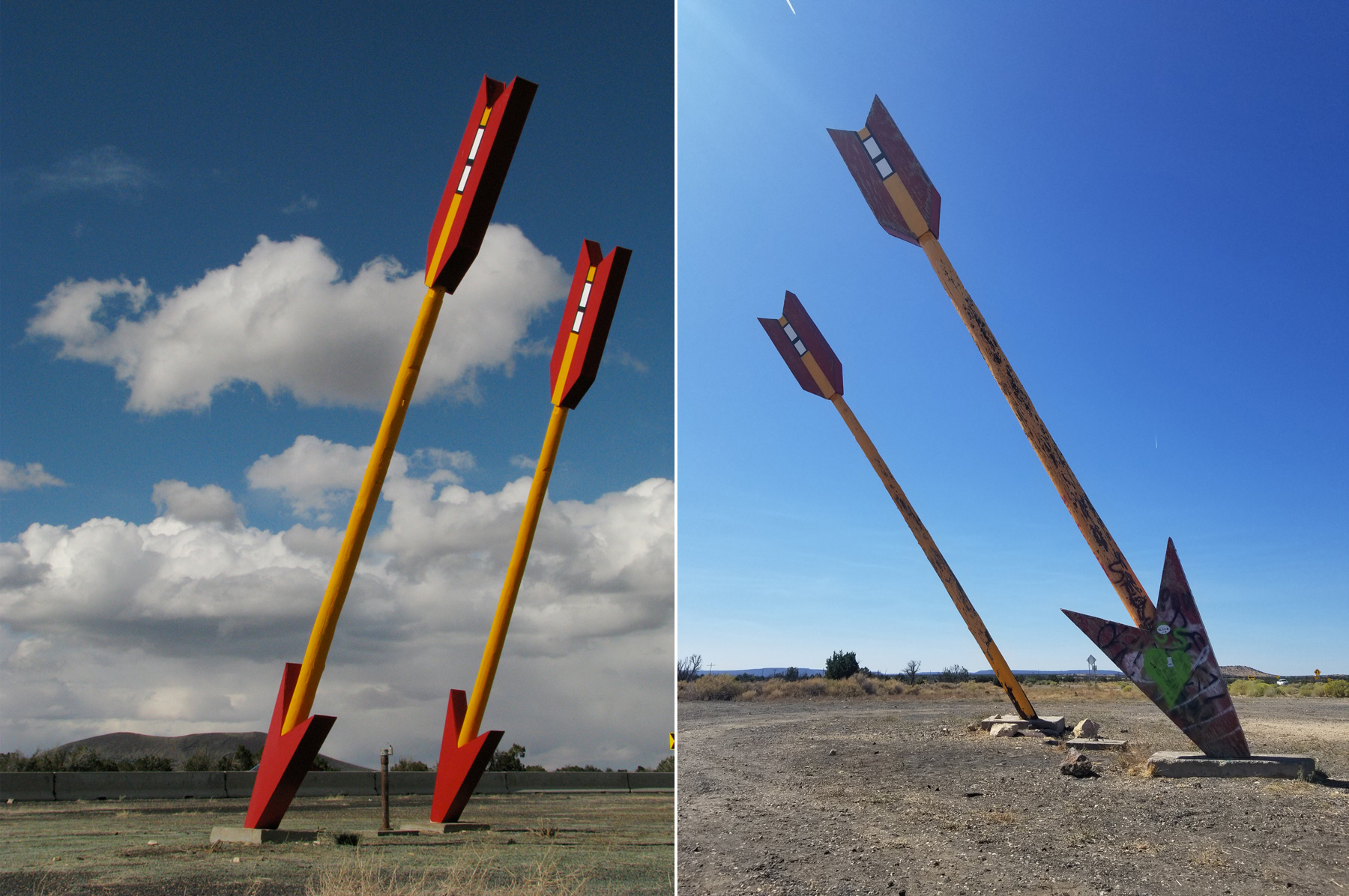
(Click here for the history of the Twin Arrows Trading Post and t0 see original photographs when it was in operation.)
As photographers of abandoned places – white photographers, to be clear – we recognize the role we play here, and how our work could go from an homage to exploitation of and harm toward the Indigenous People who were once displaced or removed from these lands AND harmed by the stereotypes and appropriation of the very establishments that pushed them out.
So first and foremost, we’d like to pay humble respect to all of the Indigenous lands, the nations, the tribes, and the pueblos through which we traveled on our way from Milwaukee to Twin Arrows: the Navajo (Diné) Nation, Hopi (Hopisinom) Tribe, over a dozen Pueblos of New Mexico, including Isleta Pueblo (Shiewhibak) and Laguna (Ka’waika), the Cherokee Nation (Anigiduwagi), Kickapoo, Sac/Sauc and Fox (Thakiwaki and Meskwaki), Quapaw (O-Gah-Pah) and Miami Tribes of Oklahoma, as well as the Texas land that used to belong to the Comanche and Kiowa, before they were removed.
Please take some time to learn more about these nations, tribes, and pueblos in the comprehensive educational guide “American Indians and Route 66” (created by the American Indian Alaska Native Tourism Association – aianta.org). Download the PDF here ›
Secondly, while on our trip we learned more about how hard the surrounding nations, tribes, and pueblos have been hit by Covid-19 – the coronavirus itself, as well as the economic fallout. While the federal government has granted funds to Indigenous People all over the U.S. affected by the pandemic through the CARES Act – as we know ourselves, it’s not going to be enough.
As a gesture of appreciation and respect, we’d like to offer up our original, one-of-a-kind Polaroid of Twin Arrows to help raise money for relief. 100% of the sale will go to the Navajo Hopi Families Covid-19 Relief Fund, an initiative of Yee Ha’oolniidoo, a nonprofit which brings desperately needed food, water, and essential items to Navajo and Hopi communities every week. At nearly $6 million raised, this is one of the largest all-volunteer Indigenous relief efforts in the country.
BONUS!
Along with the Polaroid, you’ll also get a little grab bag of Route 66 treats (postcards, magnets and stickers we collected on our trip) and some other little surprises.
DOUBLE BONUS!
If this Polaroid is purchased by the end of Monday, October 12, we will match the total 100%.
Looking for more ways to honor the Native peoples of the Americas?
Check out these tips from Renée Gokey, citizen of the Eastern Shawnee Tribe of Oklahoma.
